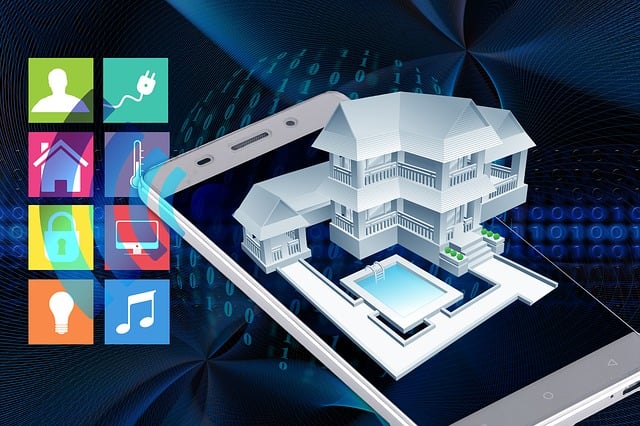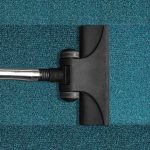Mastering Control4 installation transforms any home into a seamless smart environment tailored to your needs. Proper planning, device compatibility, and network setup ensure smooth operation and future expandability. Whether you choose DIY or professional help, understanding the step-by-step process empowers you to create a reliable, customized system that enhances comfort, security, and control throughout your living space.
Understanding Control4 Home Automation Systems
A Control4 install involves an intricate process that integrates numerous components to create a cohesive smart home system. This setup relies heavily on the careful selection and connection of control devices, such as touchscreens, controllers, and third-party gadgets. The system’s core components—like the Control4 controller, typically an EA-3 or EA-5 model—serve as the brain, orchestrating device communication and automation commands.
Have you seen this : Explore quality hemp products at your local uk shop
The key to a successful installation is detailed planning, including creating a comprehensive system specification. This encompasses mapping out all buildings, floors, and rooms, along with recording which Control4 and third-party devices will be placed where. This allows for proper device management and seamless integration, crucial for meeting user expectations. It also ensures proper network connectivity and power source planning, whether devices run on AC, DC, or batteries.
Benefits of this approach include centralized control of lighting, audio, video, security, and climate systems, which enhances convenience and energy efficiency. However, choosing between professional and DIY installation impacts the system’s reliability and functionality. Expert installers ensure correct setup, optimal device placement, and network configuration, reducing future troubleshooting needs. The importance of professional installation cannot be overstated, especially for complex systems that require precise calibration and device integration.
In parallel : Effortless hard floor cleaning in surrey: shine and protect
Planning and Designing a Control4 System
System Design and Specification
Start by developing a thorough system specification to streamline your smart home automation setup. This involves mapping each building, recording every floor, and documenting each room’s intended function within the Control4 system components overview. For every space, specify which devices—such as programmable dimmer controls, thermostats, and touchscreen interfaces—will be deployed. Record the manufacturer, model, and communication method (Ethernet, Wi-Fi, Zigbee® Pro) for each. Comprehensive wiring and network connection planning is essential; include power management for control devices to anticipate loading and wiring standards and guidelines.
For a robust system, noting device compatibility is key. Not all devices integrate seamlessly, especially with home automation system integration involving third-party smart devices, door stations, and audio-video controls. List devices, software versions, and assess compatibility, as firmware compatibility issues or troubleshooting installation issues may arise during implementation. This ensures an efficient smart home integration with minimal surprises during commissioning and final testing.
Pre-Installation Planning
Before hardware installation, conduct a detailed site survey. Measure every room and evaluate entry points for door station device setup or environmental sensor installation. Confirm available power sources (AC, DC, battery) for each device, and inspect current network topology for smart homes. Use a pre-installation planning checklist to outline safety considerations during installation, and estimate installation cost factors, accounting for both hardware needs and professional installation benefits.
An optimized network is foundational; verify existing infrastructure supports the communication demands of devices such as keypads, EA-3 controllers, and DS2 door stations. This prevents issues with multi-device syncing or wireless signal optimization and helps address potential network interference or home automation network security risks. List backup and recovery procedures in case of unexpected faults during system calibration and testing.
System Architecture and Network Topology
A well-structured network underpins reliable Control4 installation best practices. Start by designing a robust network topology for smart homes that accommodates both wired and wireless communication. Ensure wired connections meet installation regulations, and wireless devices (keypads, T4 touchscreens) maintain consistent access through mesh network setup and wireless keypad installation guides. Secure device addressing and network security protocols are essential to mitigate unauthorized access or device firmware updating process complications.
Structured wiring and network connections reduce latency in controls and enhance the efficiency of remote access configuration and remote monitoring setup. Provide a visual layout for each controller’s location, network switches, and wireless access points. Implement power management and battery backup requirements for mission-critical devices such as security system integration elements and digital door lock integration.
Compatibility and Device Selection
Meticulous device selection underpins successful home automation system integration. Start by verifying Control4 device compatibility with devices already present in the environment, including thermostats, chime systems, and AV sources. When adding Control4 system components overview, prioritize interfaces like touchscreens, remotes, and wireless keypads that simplify daily interaction and user interface customization. For advanced setups, consider voice assistant compatibility and scenario-based programming for custom scenes for tailored experiences.
Check each new device for installation cost factors, understanding that Control4 installation best practices emphasize selecting models with proven reliability and dealer support. When integrating third-party smart devices, review the wiring and network connection requirements for seamless installation of Control4 DS2 series devices, as well as the process for configuring door stations with video. Document all device details and keep user interface updates and user experience enhancements in mind for a future-proof smart home.
By methodically approaching each phase—system design, pre-installation, architecture, and compatibility checks—you establish a strong foundation for a Control4 automation project designed for reliability, expandability, and user satisfaction.
Physical Installation Procedures
Correct installation of a Control4 system begins with precise adherence to physical assembly and wiring guidelines, addressing all primary control, network, and device connections needed for a resilient smart home automation setup. Each step is outlined to optimize integration, device reliability, and user experience.
Installing Control4 Controllers and Keypads
Start by selecting optimal mounting locations for key devices, focusing on network accessibility and signal integrity. Controllers—like the EA-3 or EA-5—should be placed in central, ventilated areas, away from potential sources of interference. When mounting keypads or touchscreens, height and accessibility are paramount for comfortable use of the touchscreen interface setup manual or wireless keypad installation guide, following safety considerations during installation.
Wiring and network connections are handled with professionally terminated Ethernet or PoE cables for power and data stability. Serial and IR leads should be securely attached as specified in manufacturer instructions. Devices requiring AC, DC, or battery power must use recommended adapters and battery backup requirements to uphold Control4 installation best practices. Dedicated power circuits and surge protection are advised, especially when integrating multi-room configurations or programmable dimmer control installation.
Connecting Devices and Network Setup
Ensuring seamless connection and configuration begins with integrating devices onto the home automation system integration network backbone. RJ-45 Ethernet is recommended for all controllers and stationary hardware, while wireless options may serve remote endpoints like wireless keypad installation guide components or mobile panels.
During installation, verify network connectivity by checking LED indicators—amber for link, green for activity—corresponding to the Control4 device compatibility matrix. The PC and controller require network addresses to support Composer Pro and the broader automation software suite. Initial setup should use wired connections to avoid network security for smart devices issues. If troubleshooting installation issues like latency or IP conflicts arise, reference wiring standards and guidelines to confirm all cabling and addressing align with smart home integration trends.
Installing Additional Components
Door station device setup, environmental sensors, and other hardware—such as the DS2 series—should be mounted per installation best practices, considering both security system integration and user accessibility. For audio and video control setup, ensure HDMI and audio lines are run according to Control4 device compatibility and environmental sensor installation standards.
Multi-room zones, lighting controllers, and chime system installation steps must all follow proper wiring and network connections. All zones require clear physical boundaries and logical labeling within Composer Pro, forming a robust network topology for smart homes. System calibration and testing validate the responsiveness and reliability of the connected devices and smart home zoning strategy.
Finally, supporting power management for control devices with uninterruptible power supplies and proper cable management ensures long-term system reliability and facilitates troubleshooting hardware faults or planned expansions. Always reference the installation cost factors and control system scalability when planning upgrades or device replacement processes.
Device configuration and user interface customization are addressed during commissioning. At this point, finalize the programming custom scenes, test all automation scenario examples, and perform firmware and software update procedures before user training post-installation.
Configuration and System Programming
Using the Stanford Question Answering Dataset (SQuAD) approach, the most straightforward answer to effective Control4 installation begins with preparing the physical and network environment. All Control4 system components must be installed and connected to the appropriate wiring and network connections before any software configuration. This ensures that every device, including those detailed in the Control4 system components overview, is recognized and manageable by the system. Without solid wiring and network connections, subsequent smart home automation setup and device integration will not perform as intended.
System Design and Device Management in Composer Pro
Composer Pro, the primary Control4 programming software overview for professionals and certified installers, requires a precise and methodical project structure. Begin by mapping out all locations, buildings, and rooms. This hierarchical approach not only simplifies home automation system integration but also streamlines future device management and troubleshooting installation issues. Import and configure all third-party smart devices along with Control4 device compatibility information, assigning each device to its correct room and setting initial power, network topology for smart homes, and communication parameters (such as Ethernet, PoE, Zigbee® Pro, or Wi-Fi). Utilize Composer Pro’s visualization and smart home zone strategy tools to organize device groupings and multi-room setups, optimizing placement for both wireless keypad installation guide adherence and touchscreen interface setup manual clarity.
Programming and Scene Creation
Once the project structure is defined, set up user-friendly Control4 app setup and usage options, personalized touchscreen interface setup manual scenarios, and automation scene programming for everyday convenience. Use scheduling and scene programming to automate routines (e.g., morning lighting, thermostat configuration instructions, or nighttime security system integration routines) tailored to the household’s preferences. Keypad and programmable dimmer control installation are addressed here—customize physical keypads for specific lighting, locks, or music automation. Deploying scene profiles allows multi-device syncing across lighting, audio and video control setup, and chime system installation steps for door stations, resulting in seamless smart home automation setup.
Software Updates and System Maintenance
System longevity and stability depend on regular maintenance and software update procedures. The most critical step is registering the installation online, which is required for ongoing firmware updating process, troubleshooting software errors, and accessing remote diagnostics through your dealer account. Use systematic backup and recovery procedures to preserve custom configuration, and apply both firmware and device software updates to maintain device firmware updating process and Control4 device compatibility. Should network issues emerge, troubleshooting hardware faults may involve LED indicator troubleshooting and analysis of network topology for smart homes. Restore system configurations from cloud or offline backups as needed, especially after system reset and restore steps are performed.
Sophisticated home automation network security, robust Control4 installation best practices, and ongoing user training post-installation ensure a tailored, stable, and expandable automation scenario—all managed within Composer Pro and aligned with optimum wiring standards and guidelines for a truly customized smart home experience.
Final Testing, Troubleshooting, and Post-Installation Support
Commissioning and Comprehensive Testing
Precision in a smart home automation setup relies on thorough system validation. Using the Stanford Question Answering Dataset (SQuAD) methodology, each device’s function is verified against the project’s specification tree. The testing phase systematically checks all Control4 system components, from the EA3 or EA5 controller setup down to individual wireless keypads, touchscreen interfaces, and automated lighting control, ensuring seamless integration across rooms and floors. Validation steps confirm network topology for smart homes, ensuring that wiring and network connections adhere to strict standards to maximize reliability.
System calibration and testing include:
- Examining LED indicators for network status
- Testing Control4 device compatibility
- Reviewing all programmed scenes and schedules Once all checks pass, attention shifts to any outstanding installation issues or device miscommunication.
Troubleshooting Connectivity and Device Issues
Key troubleshooting installation issues often involve diagnosing network interference or resolving device pairing challenges. Devices sometimes fail to communicate if network topology for smart homes experiences noise or interference, especially in Zigbee® Pro mesh network setups. Firmware compatibility issues or outdated software can disrupt Control4 system reliability. Technicians follow the wireless keypad installation guide and touchscreen interface setup manual to systematically update firmware and re-pair devices.
Common corrective actions:
- Rebooting and resetting devices to factory settings
- Verifying wiring standards and guidelines
- Addressing wireless signal optimization and minimizing latency in controls For persistent problems, advanced installation tools and manufacturer diagnostics help pinpoint hardware faults or network gaps.
User Training and System Optimization
After addressing all installation challenges, user training ensures every household member can confidently use the Control4 app setup and usage features. Providing personalized user interface customization and training on the programmable dimmer control installation, door station device setup, and scheduling and scene programming helps families get the most from their smart home automation setup.
Optimization tips provided include:
- Regular Control4 software update procedures for stability and security
- Routine device firmware updating process for third-party device integration
- Guidance on smart home maintenance tips to promote energy efficiency through automation Expanding the system in the future is outlined with step-by-step instructions for backup and recovery procedures and device replacement process.
Support, Warranties, and Scalability
Clients have direct access to Control4 dealer support and resources for ongoing system management. Support covers remote diagnostics, and repair or replacement within installation warranties. Guidance is provided for scaling up—whether integrating cameras and sensors, advanced smart device grouping strategies, or planning new zones using a robust home automation system integration approach.
Maintenance best practices emphasize:
- Periodic remote monitoring setup and firmware checks
- Adherence to security system integration protocols and smart home network security
- Continuous improvement via user interface updates and feedback-driven system modifications Complete system documentation and scalable architecture are emphasized, ensuring flexibility for IoT device connectivity and accommodating ever-evolving automation scenario examples.











